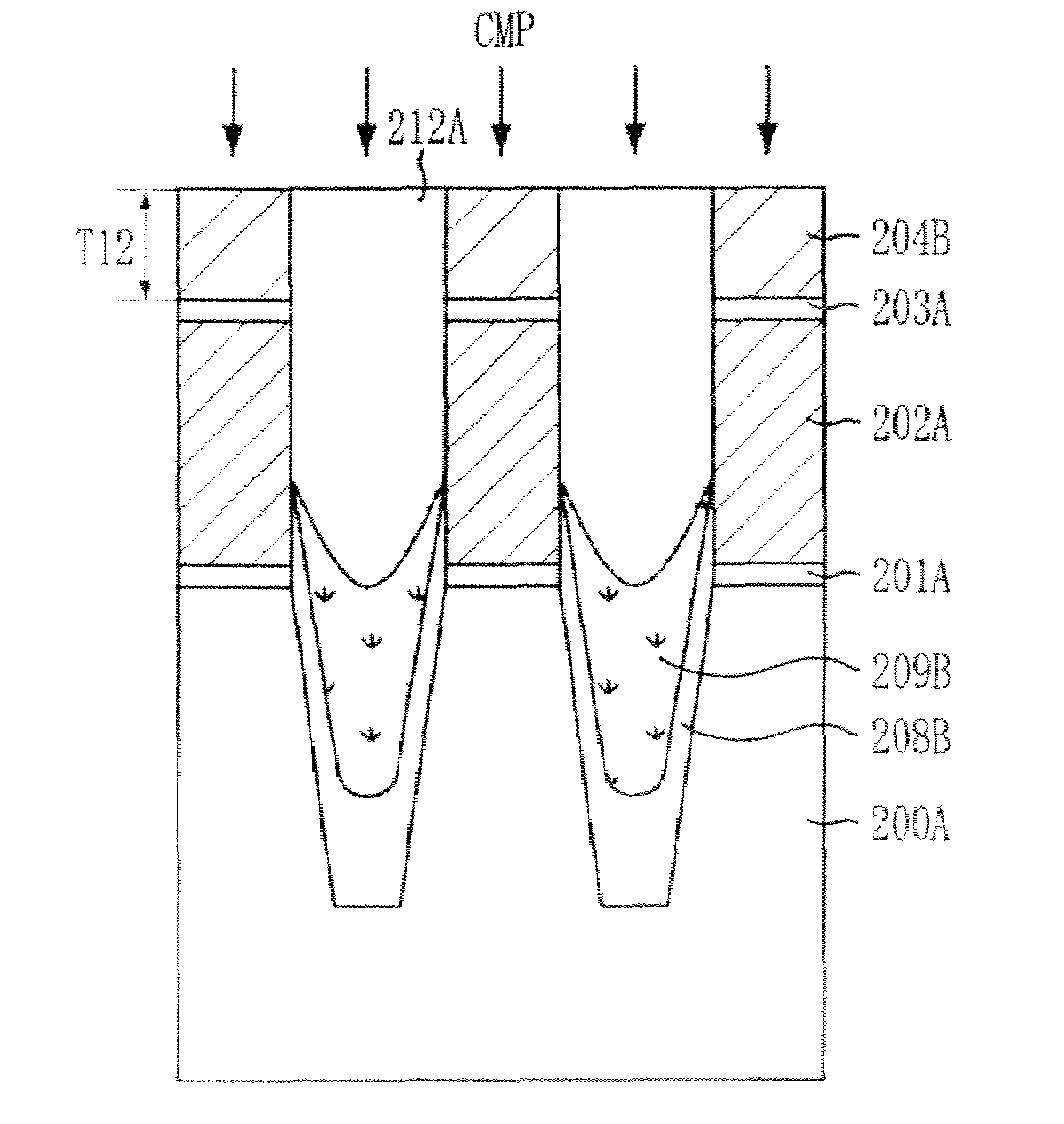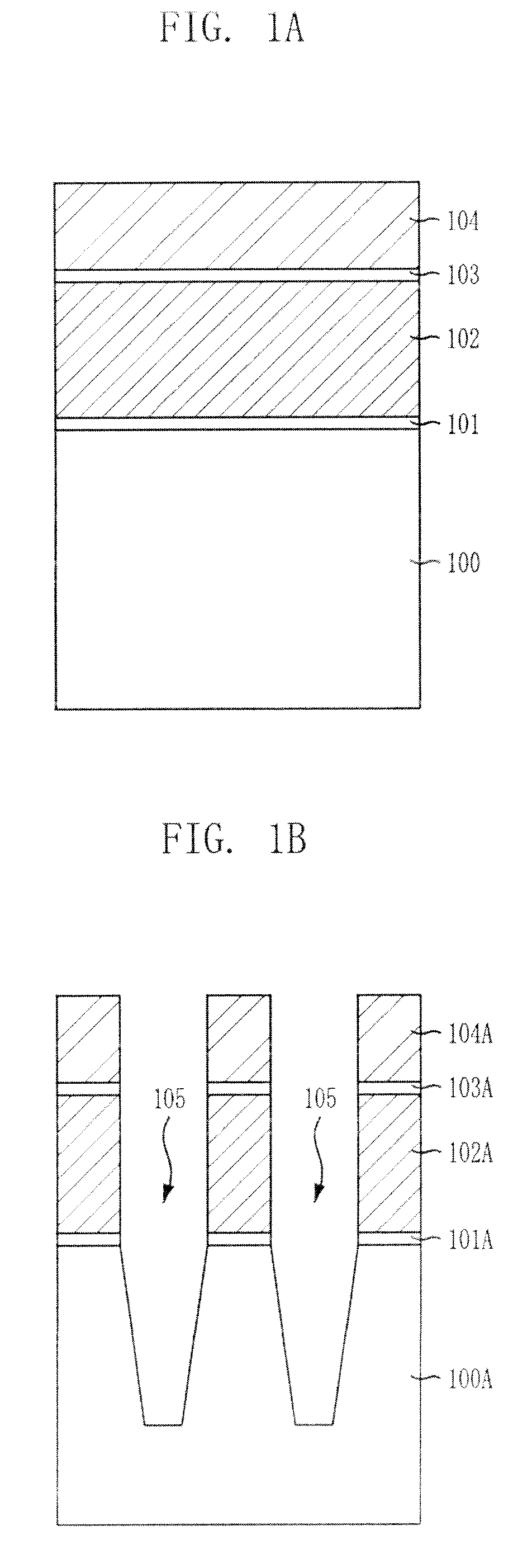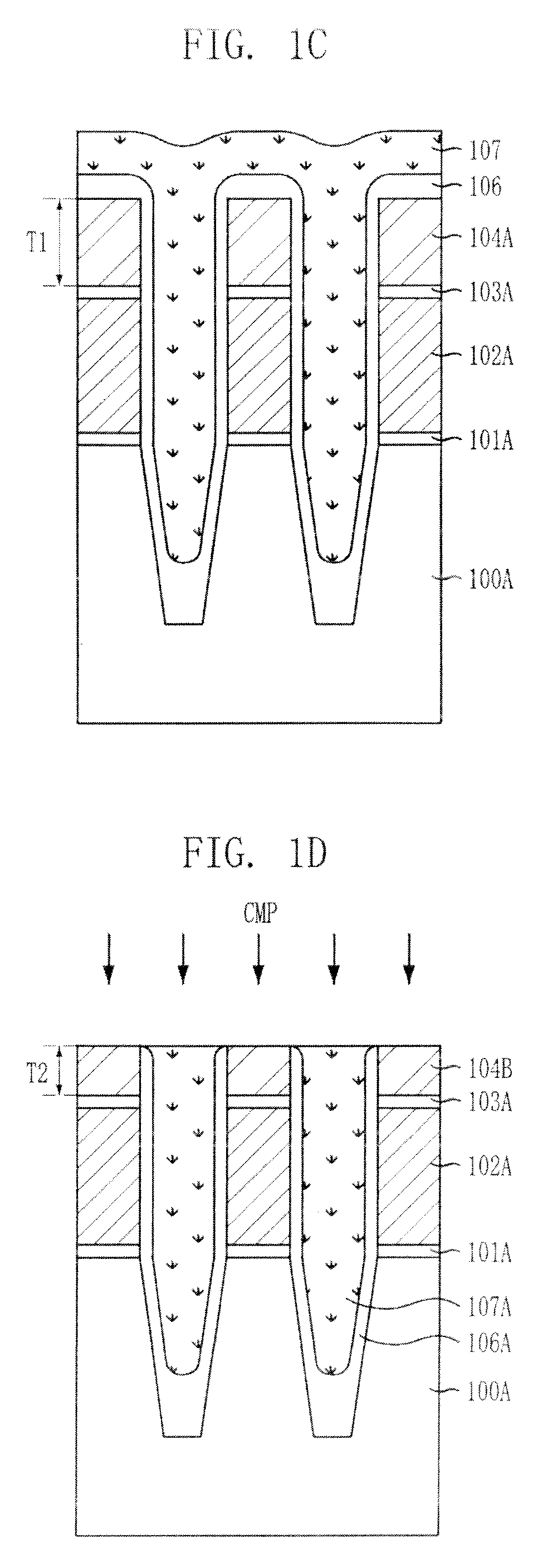Method for fabricating nonvolatile memory device
a non-volatile memory and fabrication method technology, applied in the direction of semiconductor devices, electrical appliances, basic electric elements, etc., can solve the problems of uniform removal and control of efh, and the conventional asa-sti method may not have the following limitations, so as to improve the uniformity of a threshold voltage and minimize the non-uniformity
- Summary
- Abstract
- Description
- Claims
- Application Information
AI Technical Summary
Benefits of technology
Problems solved by technology
Method used
Image
Examples
Embodiment Construction
[0031]In the following drawings, the thickness of layers and regions are exaggerated for clarity of the description, and when it is described that one layer is formed on another layer or a substrate, the term “on” indicates that the layer may be formed directly on the other layer or the substrate, or a third layer may be interposed therebetween.
[0032]FIGS. 7A to 7H are cross-sectional views illustrating a method for fabricating a nonvolatile memory device in accordance with an embodiment of the invention. FIGS. 7A to 7H illustrate mainly an isolation structure formed in a cell region for the simplicity of the description, and the detailed description of the isolation structure is provided herein below.
[0033]Referring to FIG. 7A, although not illustrated, a triple N-type well is formed in a P-type substrate 200, and a P-type well is formed inside the triple N-type well. An ion implantation process for adjusting a threshold voltage is performed thereon.
[0034]A gate insulation layer 20...
PUM
 Login to View More
Login to View More Abstract
Description
Claims
Application Information
 Login to View More
Login to View More - R&D
- Intellectual Property
- Life Sciences
- Materials
- Tech Scout
- Unparalleled Data Quality
- Higher Quality Content
- 60% Fewer Hallucinations
Browse by: Latest US Patents, China's latest patents, Technical Efficacy Thesaurus, Application Domain, Technology Topic, Popular Technical Reports.
© 2025 PatSnap. All rights reserved.Legal|Privacy policy|Modern Slavery Act Transparency Statement|Sitemap|About US| Contact US: help@patsnap.com



